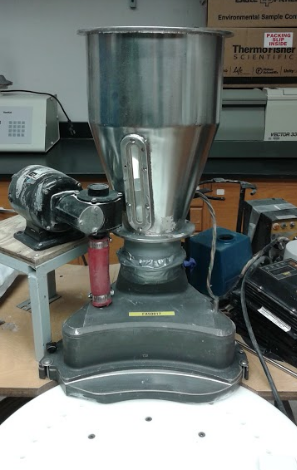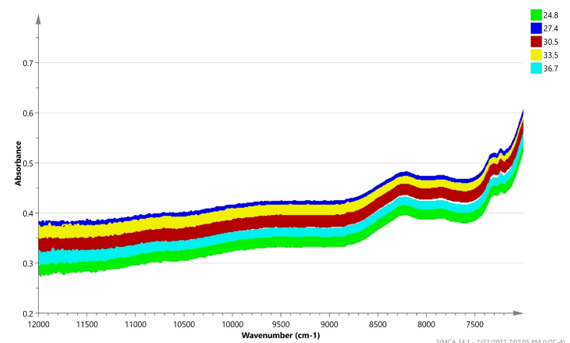A spectra-cular never ending summer
Submitted by Nadja Michelle Maldonado Luna on
I can only describe this summer with one word, exhausting. I never thought I would stand at one point of my life and say, “I really want this summer to end”. Now don’t get me wrong, this summer has been one of the most enriching summers of my life. In two months, I’ve learned much more than I will ever learn in a classroom an entire semester. I am passionate about research, and my heart skips a beat every time I enter a lab. Most certainly, I would not feel as happy and eager to keep on learning anywhere else.
This summer REU Program gave me the opportunity to work on a completely new and unknown research area to me. Yet, a very important one. It focused on the development of an in-line calibration model that can predict low drug concentrations in pharmaceutical formulations. Tablets are one of the current most popular prescription dosage forms.1 They are manufactured in rotary tablet presses by the compression of powder blends. Feed frames (Fig.1) are used in tablet presses to drive the material into compression dies by using paddles.2
This is a very important step in the process of manufacturing pharmaceuticals, since the overall drug content of a tablet will be affected by the powder properties and the operating parameters of the equipment, and drug content uniformity is a significant parameter for the assurance of drug quality.3 Our goals for this study were to understand and monitor the die filling process within the feed frame, detail the development of different calibration models and study its ability to predict the active pharmaceutical ingredient at low concentration by means of Near Infrared spectroscopy in-line, and examine the effect of small variations in paddle wheel and die disc speeds on NIR spectra and therefore on NIR prediction.
By the end of the summer, highly accurate NIR in-line calibration models were successfully developed, and we found a difference on the prediction average due to the changes in paddle wheels and die disc speeds that can be attributed to NIR spectra baseline differences (Fig. 2).
(1) University of North Carolina Eshelman School of Pharmacy. The pharmaceutics and compounding laboratory: Tablets https://pharmlabs.unc.edu/labs/tablets/intro.htm (accessed Jul 13, 2017). (2) Mendez, R.; Muzzio, F. J.; Velazquez, C. AIChE J. 2012, 58 (3), 697–706. (3) Muselík, J.; Franc, A.; Doležel, P.; Goněc, R.; Krondlová, A.; Lukášová, I. Acta Pharm. 2014, 64 (3), 355–367.










